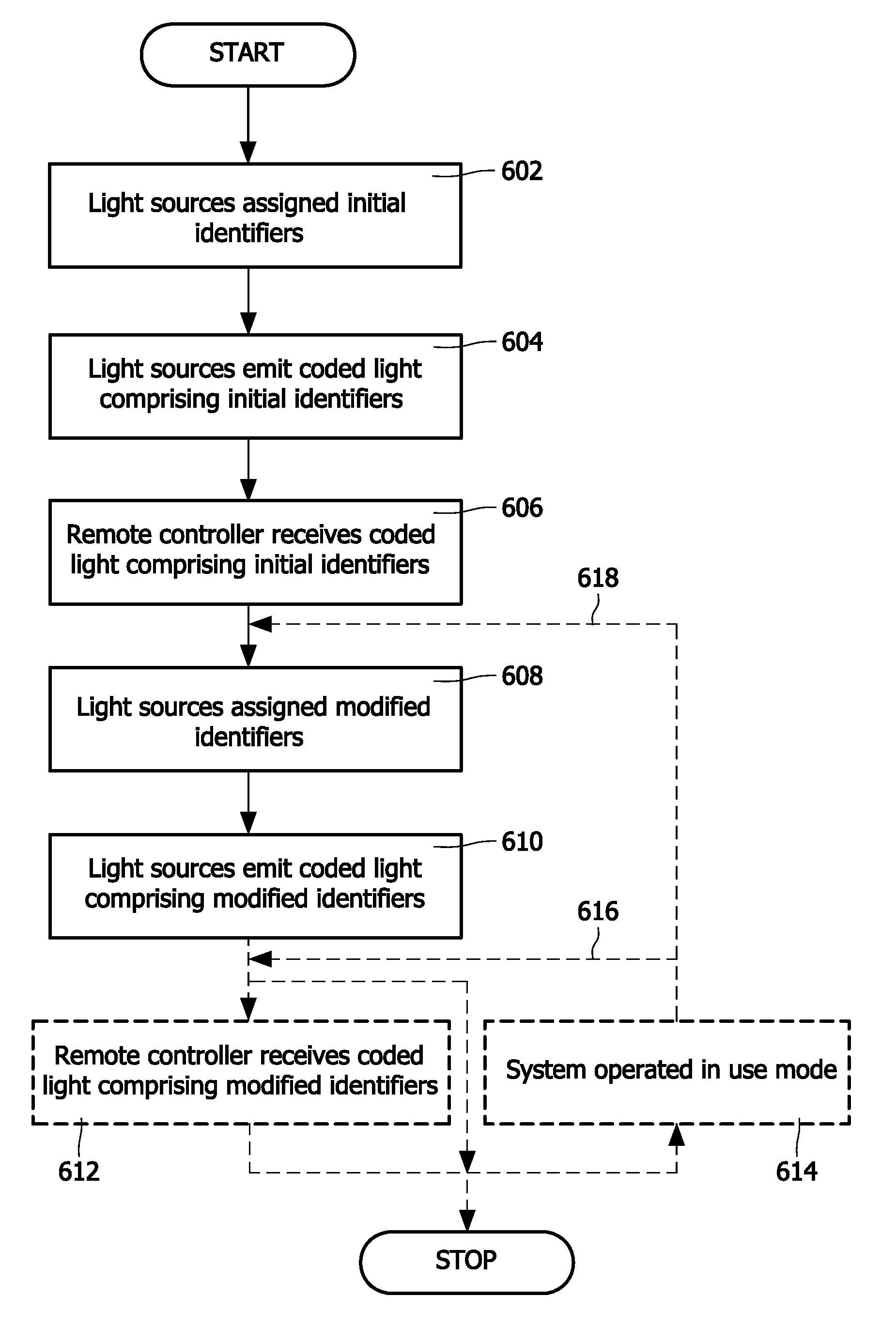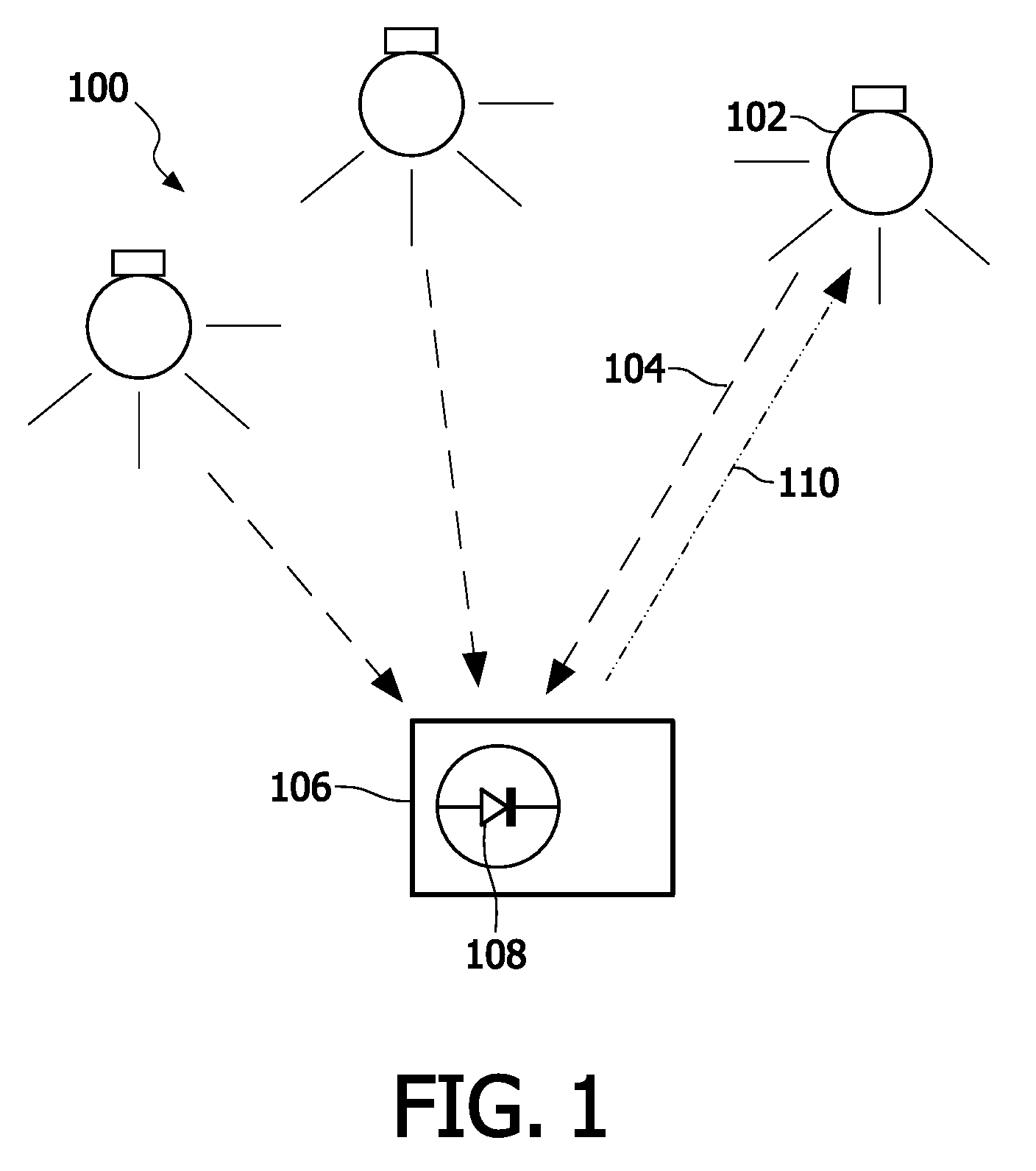Efficient address assignment in coded lighting systems
a lighting system and address assignment technology, applied in the field of lighting system operation, can solve the problems of long response time of the system, inability to apply and inability to achieve efficient cl modulation methods. the effect of improving the means of operating the lighting system
- Summary
- Abstract
- Description
- Claims
- Application Information
AI Technical Summary
Benefits of technology
Problems solved by technology
Method used
Image
Examples
Embodiment Construction
[0044]The present invention will now be described more fully hereinafter with reference to the accompanying drawings, in which certain embodiments are shown. This invention may, however, be embodied in many different forms and should not be construed as limited to the embodiments set forth herein; rather, these embodiments are provided by way of example so that this disclosure will be thorough and complete, and will fully convey the scope of the invention to those skilled in the art. Like numbers refer to like elements throughout.
[0045]Operation of a lighting system will now be disclosed with reference to the lighting system 100 of FIG. 1. The lighting system 100 comprises at least one light source, schematically denoted by the reference numeral 102.
[0046]It should be noted that the term “light source” means a device that is used for providing light in a room, for purpose of illuminating objects in the room. Examples of such light providing devices include lighting devices and lumin...
PUM
 Login to View More
Login to View More Abstract
Description
Claims
Application Information
 Login to View More
Login to View More - R&D
- Intellectual Property
- Life Sciences
- Materials
- Tech Scout
- Unparalleled Data Quality
- Higher Quality Content
- 60% Fewer Hallucinations
Browse by: Latest US Patents, China's latest patents, Technical Efficacy Thesaurus, Application Domain, Technology Topic, Popular Technical Reports.
© 2025 PatSnap. All rights reserved.Legal|Privacy policy|Modern Slavery Act Transparency Statement|Sitemap|About US| Contact US: help@patsnap.com



